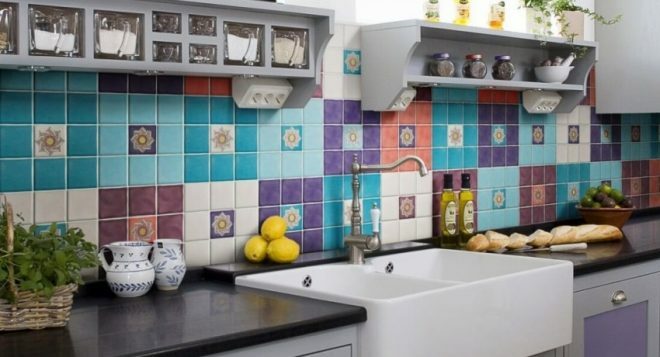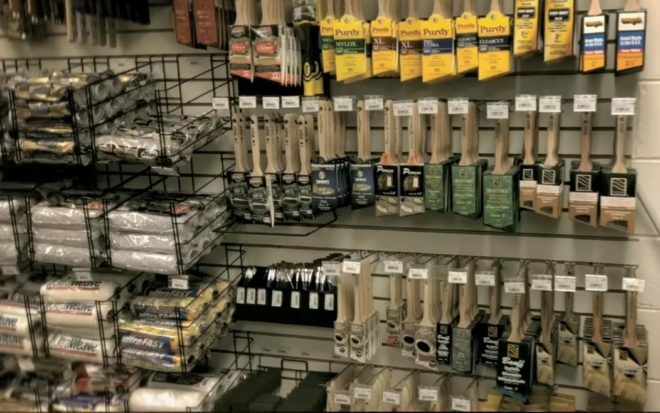Mixing units for underfloor heating
The search for new, more economical heating systems for individual dwellings quite often leads to rather extraordinary methods of solving the problems posed. So, one of the options for reducing the cost of heating services is the installation of heated floors in the room.
Such a simple solution in many ways will allow not only to significantly save on energy costs, but also create additional comfort and coziness. However, instead of future savings, the question of the correct technical selection of equipment comes to the fore.
Content:
- Description ↓
- Principle of operation ↓
- Advantages and disadvantages ↓
- Kinds ↓
- Criterias of choice ↓
- Scheme ↓
- Customization ↓
- How to do it yourself ↓
- Walkthrough ↓
- The best manufacturing companies ↓
- Price ↓
- What it depends on + examples of prices ↓
- Reviews ↓

Description
Conventionally, a room heating system using internal pipelines hidden in the floor can be represented as several interconnected elements:
- a boiler that heats the coolant;
- distribution or otherwise mixing unit;
- control system;
- pipelines;
Each element of this system is important in its own way, but the greatest attention both in the assembly process and in the operation process relates to the mixing unit or manifold. In fact, the collector is a unit for special preparation of the coolant for subsequent supply of a heating circuit to the pipeline.
The collector itself consists of a set of pipelines equipped with special monitoring and control equipment in the form of sensors, valves, regulators and circulation pump. In the mixing unit, the preparation and distribution of the coolant is carried out before being fed into the pipeline and the temperature control of the water entering after passing through the pipes is controlled.
Principle of operation
To disclose the principle of operation of the mixing unit, it is worthwhile to understand that the operation of the underfloor heating system is based on the following conditions:
- the coolant in the pipeline is under pressure due to the operation of the circulation pump, unlike some water systems heating, in which water circulates through pipes due to heating and natural passage through pipelines with a slight slope pipes;
- the water temperature in the circuit of the “warm floor” pipelines is an order of magnitude lower than the temperature in the batteries, since walking on the floor like on hot coals is somewhat uncomfortable;
- the water temperature in the pipeline circuit should not have large fluctuations, since this is not only negatively affects the temperature inside the room, but also threatens to destroy the floor coverings.
The main principle of operation of the mixing unit is the combination of different temperature flows of the heated coolant in one common, with the correction of pre-set temperature parameters.
In essence, the collector prepares to supply water of a given temperature: having received high-temperature water from the heating boiler in the collector, it mixes with the return flow of the cooled coolant, thus obtained, a mixture of medium temperature is fed into pipeline.

Advantages and disadvantages
Compared to traditional battery heating systems, the underfloor heating through the collector allows for much longer heat storage in the room, creating greater comfort for the inhabitants.
However, it should be taken into account that the installation of such equipment requires sufficient knowledge of heat engineering, to make the necessary calculations and to have sufficient skills in using the system.
Kinds
Conventionally modern collector systems for underfloor heating can be divided into three types:
- sequential type of system - the most acceptable type of building a warm floor for large areas that require a significant amount of coolant, it directly pumps water from a heat source to the consumer;
- parallel type - based on the separation of coolant flows for several consumers, this type is more complex, and requires correct calculations and qualified installation, however, allows you to adjust the temperature individually for each premises;
- mixed or combined collector type, the most complex of the presented equipment options, allowing you to simultaneously use both sequential and parallel type of mixing of the coolant or use one of them.
For the direct operation of the underfloor heating system, there are two types of collectors:
- collector with three way valve;
- with two-way valve.
The first type is based on the use of a three-way valve in the equipment - mixing occurs by adding to hot water coming from a heat source with an already cooled coolant from the pipeline reverse feed.
Such systems are equipped with intelligent drives that allow you to adjust the temperature depending on weather conditions and the temperature in the room itself. This type of valve, among other things, has a very large margin of safety, since the fluid flows in the housing with a difference of up to 70 degrees.
The electronic component of such equipment has several degrees of protection and allows you to control the opening of the damper with precise adjustment of the water temperature. In addition, three-way valves have a large capacity and therefore are mainly used in complex heating systems of buildings.
Two-way valve is a more popular type of fittings - such devices are less whimsical, the process of mixing the liquid in them occurs constantly, therefore, the risk of destruction of the body in them is small. Yes, such valves have less throughput than a three-way valve, but this is enough to ensure stable and smooth temperature control. Such devices are most popular in rooms up to 200 meters.
Criterias of choice
When designing a heating system for a home using a warm floor, when choosing mixing units, the selection criteria are:
- volume of the room;
- number of individual pipelines;
- the complexity of the selected option;
- price of equipment.
Scheme
Conventionally, the scheme of the simplest mixing unit can be represented as follows:
- a two-way thermostatic valve is installed on the coolant supply pipe from the heat source;
- further, a circulation pump with a coolant temperature sensor;
- it is followed by a feed collector with servomotors and a switching unit or control unit;
- pipeline heating water floor;
- on the return manifold bypass with a valve connected to the supply manifold;
- ball valve on the return pipe to the heat source;
- connecting pipe with control valve.

Customization
After installation of the equipment, the system is checked for cold feed without fail. Such a technological move is necessary to detect coolant leaks, in the cold state, as a rule, it is easier to detect leaks and eliminate water leakage from the system.
After that, the operation in the operating mode with the coolant supply is checked, the test is carried out not less than within 12 hours with maximum load, and after bleeding air for another 12 hours in standard mode.
During commissioning, attention is paid to the efficiency of the valves, the compliance of the readings of the temperature sensors and valves, valves, the emergency shut-off system of the mixer.
How to do it yourself
But, as you know, nothing is impossible, and with underfloor heating a week or two is enough to carefully study the options for installing underfloor heating systems proposed for installation in order to independently conduct their assembly.
But before proceeding with the assembly, you need to clearly understand that it will be cheaper, easier and better to assemble from branded components. Those who decide to make all the parts on their own will have to be patient and persistent, first of all, in order to later admit the mistake and remake everything with company accessories.
To build the simplest system you will need:
- working draft;
- mounting niche or protective metal cabinet;
- two-way thermostatic valve;
- circulation pump;
- temperature sensor;
- feed and reverse manifold;
- electronic control unit;
- connecting pipes;
- ball valves;
- check valves;
- Mayevsky cranes;
- pipe for coolant pipe;
- mounting tape;
- keys set;
- universal mounting grease.

Walkthrough
Initially, before the installation of the system begins, the premises are cleaned and the working surface is prepared for work.
Further work is carried out in the following order:
- according to the working draft, a protective cabinet is mounted;
- mounted input pipe from the boiler and return feed;
- the necessary valves and actuators, sensors, a Mayevsky crane, a safety valve are mounted on the supply and return manifold;
- mounted on the cabinet wall according to the collector diagram;
- a circulation pump and sensors are installed;
- coolant pipelines are laid on the floor;
- pipelines are connected to collectors;
- the control unit is mounted;
- the system is filled with water, a cold test is performed;
- leaks are eliminated;
- the system is tested in operating mode.
The best manufacturing companies
The manufacturers of special equipment for heat supply, presented to date, offer several options for their products, including sets of ready-made systems. One of the pioneers of the market of accessories for underfloor heating, giving a 10 year full guarantee on its products, is a well-known manufacturer VALTEC. The company offers a full range of equipment both for a complete solution, and for an independent set of elements of heat supply systems.
Price
Considering the possibility of self-installation of underfloor heating equipment, it is not superfluous to navigate in the price range to the main nodes:
- 3-way manifold block VALTEC cost from 9,000 to 12,000 rubles;
- three-way mixing valve starts at a price of 3150 rubles;
- pump and mixing unit will cost from 19,000 rubles;
- the pump will cost from 3,500 rubles.
At the same time, a ready-made set of underfloor heating with a cabinet and all the necessary materials and equipment will cost:
- for placement in 60 m2 on 3 circuits from 40 000 rubles;
- for a room of 120 m2 on 6 circuits about 58,000 rubles.

What it depends on + examples of prices
The final cost of implementing a heat supply project for a room mainly depends on how difficult it is the project, and in what conditions the installation will be carried out - installation in new buildings is somewhat cheaper than in secondary buildings buildings.
In addition, the prices for various works will fluctuate depending on the season and the timing of the work:
- installation of a security group from 1,000 rubles.
- installation of a circulation pump from 1,500 rubles.
- installation of a 3-way valve about 1,500 rubles.
- installation of a pump and mixing unit from 4,000 rubles.
- installation of the collector block about 2 000 rubles.
- installation of a distribution manifold cabinet about 3,000 rubles.
- installation of pipes of the heating system from polypropylene up to 40 mm 150 rubles. m.p.
- installation of water heat-insulated floors from 400 rubles. m2
Reviews
“They ordered“ warm floors ”, the dampness and mold disappeared in the apartment, it was warm and comfortable. You can easily switch modes and adjust the temperature. We are very satisfied with the result. ”
“In the house I decided to install a warm floor myself. A week went shopping, studied catalogs, then another week on the Internet browsed information. I bought everything as a set, only ordered pipes separately. And after two weeks a trial run - I am satisfied with the work. The main thing is simple and clear, and at the same time, significant savings! ”


